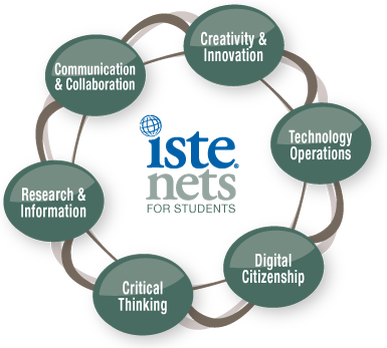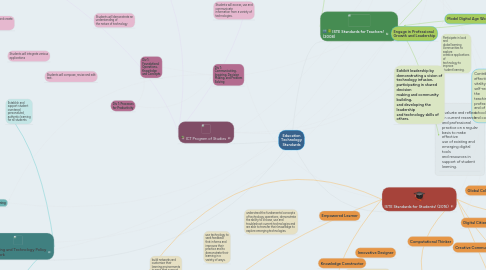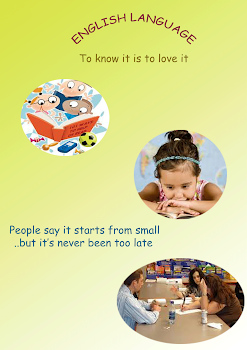Valverde-Berrocoso, J. 41, 139141. Firstly, it is necessary to have strong leadership that generates a coherent ICT vision and policy at the centre and secondly, a climate of acceptance of technologies as an element of educational innovation, in which two main agents are involved. Rev. Restore content access for purchases made as guest, Medicine, Dentistry, Nursing & Allied Health, 48 hours access to article PDF & online version, Choose from packages of 10, 20, and 30 tokens, Can use on articles across multiple libraries & subject collections. Analysis of the digitization process of a secondary school from the DigCompOrg model. Rev. With a personal account, you can read up to 100 articles each month for free. (2010). Behav. Considering the overall number of participants in all the research studies consulted, it is particularly relevant that the present SLR covers 2,531 educational centres, 19,636 teachers, 8,652 members of management teams, 467 students and 27 experts. Inf. (2007). 40, 305327. doi: 10.1108/K-02-2017-0060, Prokopiadou, G. (2012).  Figure 4. (2010). The role of the principals leadership style in the implementation of ICT policy. She is dedicated to developing teachers ability to use technology in both meaningful and authentic ways. However, the functions of such coordinators in educational centres are not entirely clear, and they fulfil many different roles, given that the work of the ICT coordinator is complex and demanding. The management team stands as an empowering element, a driver of innovation and change within the school and at the same time, an ICT coordinator adds a dynamizing and guiding element to the process (Papaioannou and Charalambous, 2011; Vanderlinde et al., 2012a,b, 2014; Martn et al., 2013). Diagram of the data collection procedure. Turk. It guides leaders, coaches, peers, and individual teachers in identifying the impact of technology upon themselves and their learners. 7:895042. doi: 10.3389/feduc.2022.895042. Open Distance Learn. Variety of student-developed choices for product creation, where collaboration, evaluation, and analysis is required, Teachers providing questions and resources for students, Teachers guiding question development with students, Students asking questions, finding answers to their resources, Students asking questions, researching answers, providing findings to global audience, Iowa Statewide Assessment of Student Progress, Curriculum, Instruction, and Assessment Network (CIA), Professional Learning Series: MTSS for the Content Areas. These authors investigate the importance of the successful integration of ICT in schools, to facilitate the ability to develop a school-based ICT policy to establish a plan (Vanderlinde et al., 2010). Table 1. doi: 10.1007/s10956-010-9230-y. Regarding the document characteristics of the scientific literature analysed, it can be affirmed that the geographical locations of the most important publications on ICT planning in schools in the last decade, are widely spread throughout the world, with a predominance in Spain (30.9%), Belgium (16.7%) and to a lesser extent, the United States (4.8%).
Figure 4. (2010). The role of the principals leadership style in the implementation of ICT policy. She is dedicated to developing teachers ability to use technology in both meaningful and authentic ways. However, the functions of such coordinators in educational centres are not entirely clear, and they fulfil many different roles, given that the work of the ICT coordinator is complex and demanding. The management team stands as an empowering element, a driver of innovation and change within the school and at the same time, an ICT coordinator adds a dynamizing and guiding element to the process (Papaioannou and Charalambous, 2011; Vanderlinde et al., 2012a,b, 2014; Martn et al., 2013). Diagram of the data collection procedure. Turk. It guides leaders, coaches, peers, and individual teachers in identifying the impact of technology upon themselves and their learners. 7:895042. doi: 10.3389/feduc.2022.895042. Open Distance Learn. Variety of student-developed choices for product creation, where collaboration, evaluation, and analysis is required, Teachers providing questions and resources for students, Teachers guiding question development with students, Students asking questions, finding answers to their resources, Students asking questions, researching answers, providing findings to global audience, Iowa Statewide Assessment of Student Progress, Curriculum, Instruction, and Assessment Network (CIA), Professional Learning Series: MTSS for the Content Areas. These authors investigate the importance of the successful integration of ICT in schools, to facilitate the ability to develop a school-based ICT policy to establish a plan (Vanderlinde et al., 2010). Table 1. doi: 10.1007/s10956-010-9230-y. Regarding the document characteristics of the scientific literature analysed, it can be affirmed that the geographical locations of the most important publications on ICT planning in schools in the last decade, are widely spread throughout the world, with a predominance in Spain (30.9%), Belgium (16.7%) and to a lesser extent, the United States (4.8%).
Register a free Taylor & Francis Online account today to boost your research and gain these benefits: Deconstructing EdTech frameworks based on their creators, features, and usefulness, a School of Education, University of North Carolina, Chapel Hill, NC, USA, /doi/full/10.1080/17439884.2020.1773852?needAccess=true.
Br. Sekolah Tinggi Filsafat Jaffray Makassar, Indonesia. Thats where technology integration frameworks come inthey can help teachers examine how technology supports learning and keep them from getting stuck on specific tools. From there I make informed decisions for future planning that are rooted in reflection and qualitative assessment. Latinoam. As can be seen in Table 1, the following research questions have been formulated to meet the proposed objective from different areas of analysis: conceptual framework, documentary characteristics, and pedagogical dimension. This approach is supported by studies that investigate the perception of the ICT coordinator in the implementation of technologies, where it is concluded that normally ICT initiatives are proposed by a group of teachers, led by an ICT coordinator, who is the one who dynamizes, disseminates, and propagates different actions (Moses et al., 2012; Rivero and Alonso, 2016). Tecnologas de la informacin y comunicacin en el sistema escolar. Furthermore, the technical assistance usually provided by an ICT coordinator has a stimulating impact on the educators own uses of ICT, since the lack of it can create difficulties with the use of computers (Moses et al., 2012; Peirats and San Martn, 2012). Relatec Rev. Among the various articles selected, theoretical studies were eliminated.
However, most of the research studies implemented on ICT integration are too biassed and focus mainly on the influence of some characteristics of the ICT integration process, forgetting the systemic nature of the phenomenon (Tondeur et al., 2008). (2017) analyse the Balanced scorecard (BSC) as a strategic method of measuring ICT integration in schools, using pedagogical principles and organisational techniques, helping educational institutions to identify weaknesses and strengths in e-learning projects and guide them towards selecting appropriate strategies for the process.  ICT trainer, providing didactic support and advice to teachers in the implementation of ICT in the classroom. Area, M., and Correa, J. M. (2010).
ICT trainer, providing didactic support and advice to teachers in the implementation of ICT in the classroom. Area, M., and Correa, J. M. (2010).  Programas educativos con uso de TIC en la regin de Bogot Cundinamarca - Colombia- un modelo de evaluacin. doi: 10.1080/17439884.2011.651473, Papaioannou, P., and Charalambous, K. (2011). Read your article online and download the PDF from your email or your account. Did the technology improve student performance? 72, 110. It is important in the elaboration of the DEP, to analyse the results obtained in the development of the process, so that we get a plan that varies in accordance with circumstances, needs and results obtained (Vanderlinde et al., 2010, 2012a,2012b). Only those schools that build a technology policy ultimately have successful ICT integration (Baylor and Ritchie, 2002; Fishman and Zhang, 2003; Area, 2005; Glbahar, 2007; Hew and Brush, 2007; Tondeur et al., 2008; Vanderlinde et al., 2008; Valverde-Berrocoso, 2012). The ETIFS reflects how ICT policy at the school level, as well as school culture relating to technology, are essential elements for strategic planning (Blignaut et al., 2010; Valverde-Berrocoso et al., 2010; Vanderlinde and Van Braak, 2010a; Goktas et al., 2013; Niemi et al., 2013; Vanderlinde et al., 2014; Volungeviciene et al., 2014). doi: 10.19173/irrodl.v15i6.1927, Wachira, P., and Keengwe, J. MJS-D wrote the first draft of the manuscript. At the same time, research on digital technologies from a general perspective has been considered fundamental, excluding studies on specific technologies. Rodrguez, P., Nussbaum, M., and Dombrovskaia, L. (2011). Summak et al. The general objective of this work is to carry out a Systematic Literature Review (SLR) on the strategic planning of technology in primary and secondary schools from 2010 to 2021. 9, 291308. The Technology Integration Matrix (TIM) developed by the Florida Center for Instructional Technology at the University of South Florida and the Arizona K12 Center is a matrix of skills and competencies to support and evaluate teachers use of Educational Technology. Educ. MGRMs Educational E-governance framework helps countries set new educational standards by transforming mass-producing based education systems into complete-personality based education systems an indispensable framework for any education system seeking to reform and integrate students that silently slip through the cracks. Scientific vocabulary and concepts form her content knowledge, and instructional strategies that have succeeded with her students in the past and best practices for the grade level form her pedagogical knowledge. Educ. El coordinador TIC en los centros educativos: funciones para la dinamizacin e incorporacin didctica de las TICs en las actividades de aprendizaje. It is important to note that these tools emphasise that strategic planning should be the result of school culture and climate in the educational community with respect to technologies (Vanderlinde et al., 2010, 2012b). With respect to the type of participants; the studies conducted mainly rely on teachers (48%) to resolve their research questions and objectives and to a lesser extent on members of the management team (21%). The period of publication of documents was established such that studies published between January 2010 and December 2021 (last 12 years) were considered. PLoS One 16:e0256283. Authors such as Martn et al. Several theoretical frameworks have been released in recent years to inform how educational technology (edtech) can be used in the classroom. Integrating technology into content, instruction, and assessment can be complex and challenging. Specifically, we are talking about terms such as digital capabilities, school leadership, or maturity training models, which are all key elements of ICT policy. Taking into account the different themes, dimensions, and theoretical approaches presented above, one of the main conclusions that can be drawn from the SLR is that the incorporation of technology in the classroom requires a redefinition of the organisational culture in schools. The e-capacity of primary schools: development of a conceptual model and scale construction from a school improvement perspective. Larosiliere, G. D., McHaney, R., and Kobelsky, K. (2016). Educational Technology Publications, Inc. Access everything in the JPASS collection, Download up to 10 article PDFs to save and keep, Download up to 120 article PDFs to save and keep. Comprehensive ICT policy plan, focussing on ICT leadership practices that favour the integration of technologies. EDMETIC 7, 297320. I recommend exploring different educational technology integration frameworks that can help teachers zero in on what works best for them, and why.
Programas educativos con uso de TIC en la regin de Bogot Cundinamarca - Colombia- un modelo de evaluacin. doi: 10.1080/17439884.2011.651473, Papaioannou, P., and Charalambous, K. (2011). Read your article online and download the PDF from your email or your account. Did the technology improve student performance? 72, 110. It is important in the elaboration of the DEP, to analyse the results obtained in the development of the process, so that we get a plan that varies in accordance with circumstances, needs and results obtained (Vanderlinde et al., 2010, 2012a,2012b). Only those schools that build a technology policy ultimately have successful ICT integration (Baylor and Ritchie, 2002; Fishman and Zhang, 2003; Area, 2005; Glbahar, 2007; Hew and Brush, 2007; Tondeur et al., 2008; Vanderlinde et al., 2008; Valverde-Berrocoso, 2012). The ETIFS reflects how ICT policy at the school level, as well as school culture relating to technology, are essential elements for strategic planning (Blignaut et al., 2010; Valverde-Berrocoso et al., 2010; Vanderlinde and Van Braak, 2010a; Goktas et al., 2013; Niemi et al., 2013; Vanderlinde et al., 2014; Volungeviciene et al., 2014). doi: 10.19173/irrodl.v15i6.1927, Wachira, P., and Keengwe, J. MJS-D wrote the first draft of the manuscript. At the same time, research on digital technologies from a general perspective has been considered fundamental, excluding studies on specific technologies. Rodrguez, P., Nussbaum, M., and Dombrovskaia, L. (2011). Summak et al. The general objective of this work is to carry out a Systematic Literature Review (SLR) on the strategic planning of technology in primary and secondary schools from 2010 to 2021. 9, 291308. The Technology Integration Matrix (TIM) developed by the Florida Center for Instructional Technology at the University of South Florida and the Arizona K12 Center is a matrix of skills and competencies to support and evaluate teachers use of Educational Technology. Educ. MGRMs Educational E-governance framework helps countries set new educational standards by transforming mass-producing based education systems into complete-personality based education systems an indispensable framework for any education system seeking to reform and integrate students that silently slip through the cracks. Scientific vocabulary and concepts form her content knowledge, and instructional strategies that have succeeded with her students in the past and best practices for the grade level form her pedagogical knowledge. Educ. El coordinador TIC en los centros educativos: funciones para la dinamizacin e incorporacin didctica de las TICs en las actividades de aprendizaje. It is important to note that these tools emphasise that strategic planning should be the result of school culture and climate in the educational community with respect to technologies (Vanderlinde et al., 2010, 2012b). With respect to the type of participants; the studies conducted mainly rely on teachers (48%) to resolve their research questions and objectives and to a lesser extent on members of the management team (21%). The period of publication of documents was established such that studies published between January 2010 and December 2021 (last 12 years) were considered. PLoS One 16:e0256283. Authors such as Martn et al. Several theoretical frameworks have been released in recent years to inform how educational technology (edtech) can be used in the classroom. Integrating technology into content, instruction, and assessment can be complex and challenging. Specifically, we are talking about terms such as digital capabilities, school leadership, or maturity training models, which are all key elements of ICT policy. Taking into account the different themes, dimensions, and theoretical approaches presented above, one of the main conclusions that can be drawn from the SLR is that the incorporation of technology in the classroom requires a redefinition of the organisational culture in schools. The e-capacity of primary schools: development of a conceptual model and scale construction from a school improvement perspective. Larosiliere, G. D., McHaney, R., and Kobelsky, K. (2016). Educational Technology Publications, Inc. Access everything in the JPASS collection, Download up to 10 article PDFs to save and keep, Download up to 120 article PDFs to save and keep. Comprehensive ICT policy plan, focussing on ICT leadership practices that favour the integration of technologies. EDMETIC 7, 297320. I recommend exploring different educational technology integration frameworks that can help teachers zero in on what works best for them, and why.